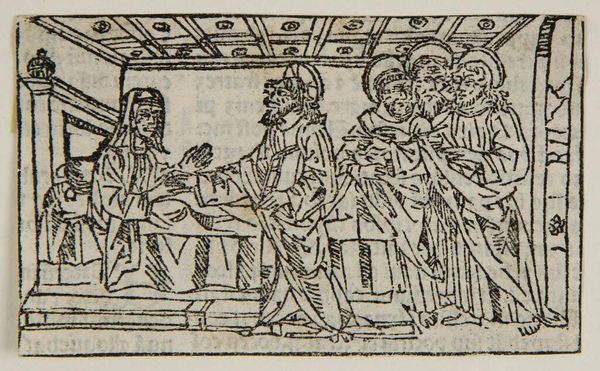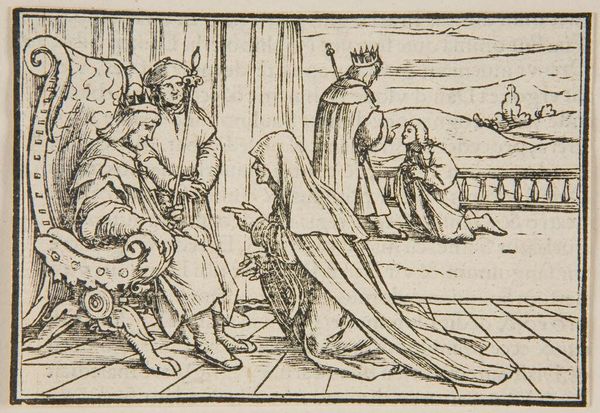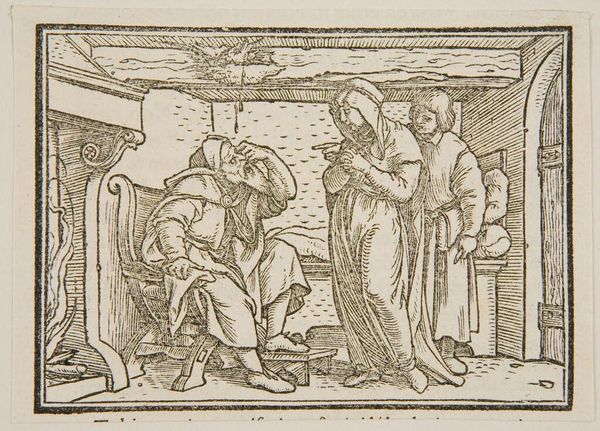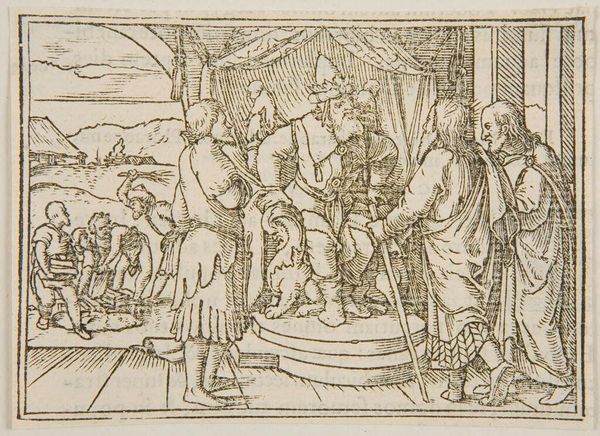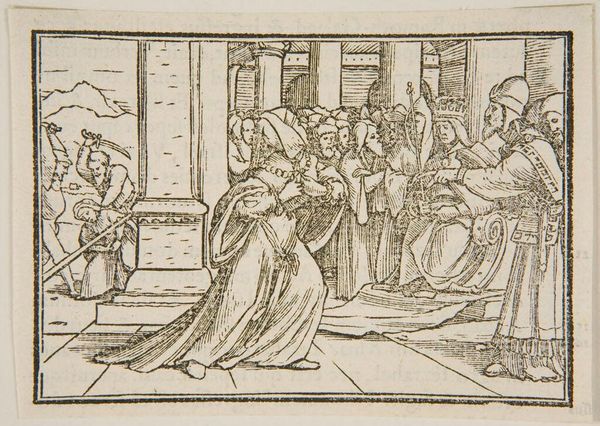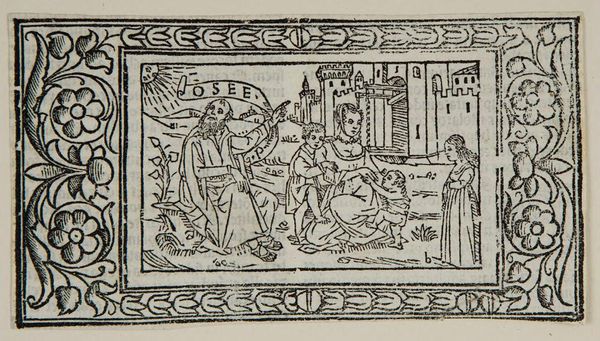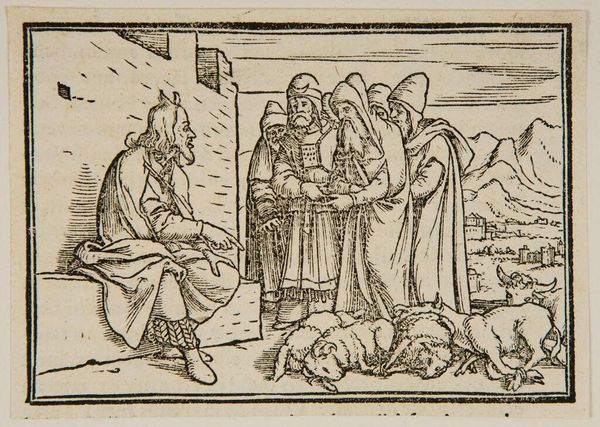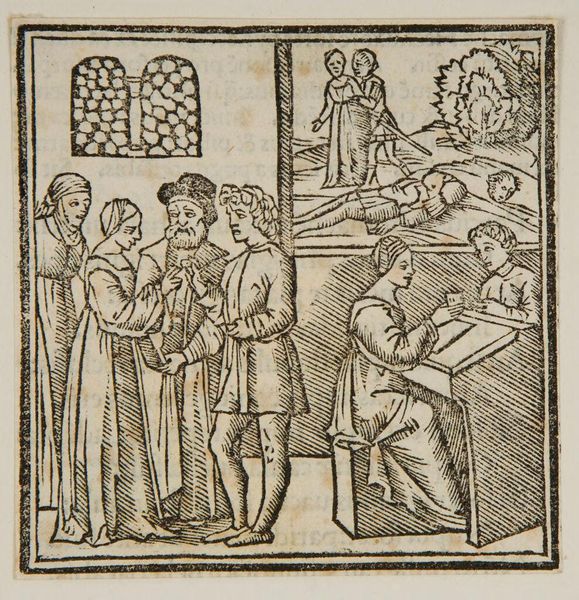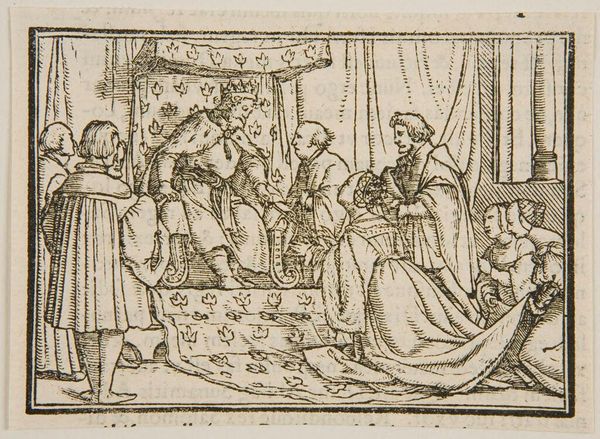
Copyright: CC0 1.0
Curator: Holbein's "Amas I" presents us with a starkly linear composition; the stark contrast and rigid lines evoke a sense of almost severe intellectualism. Editor: Indeed. Considering Holbein's era, this image speaks volumes about the power dynamics inherent in learning and discourse, particularly within religious contexts. The speaker is clearly a man, and his position of power suggests how knowledge was mediated. Curator: The woodcut medium lends itself to such graphic clarity, emphasizing the spatial relationships between the figures and the architecture. Look at the interplay of light and shadow; it guides the viewer's eye across the scene. Editor: Absolutely. And it also highlights the societal structures that placed men at the forefront of theological interpretation while often excluding or silencing women and marginalized groups. Curator: The precise details in the figures' robes and the architectural setting underscore the artist's mastery of form. Editor: It’s a potent reminder of how art can subtly reinforce or challenge existing power structures. I leave with more to ponder concerning the role of representation in shaping our understanding of history and ourselves. Curator: I agree. Holbein leaves us with a visually compelling composition, using lines to direct the eye and subtly reflect the narrative's depth.
Comments
No comments
Be the first to comment and join the conversation on the ultimate creative platform.
